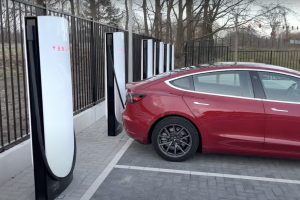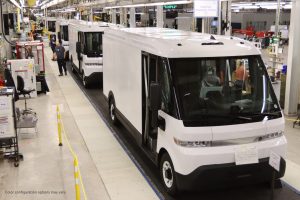Mercedes is showing off the strength of a more traditional pricing strategy in its Q1 earnings report, which has crushed investor expectations.
Much like many legacy automakers, Mercedes-Benz has quickly learned the incredible expense of a complete switch to electrification. Not only does it require a complete retooling of numerous factories, but in the case of Mercedes, it also involves investing in an EV charging network alongside its development of countless EV segments. Despite these cost hurdles, Mercedes kept its earnings up in the first quarter of the year, crushing estimates and showing the strength of its traditional pricing strategy.
According to the German automaker’s Q1 earnings report, group earnings grew 5% year-over-year (YoY) to 5.5 billion euros ($6.04 billion). Simultaneously, group revenues grew 8% to 37.5 billion euros ($41.19 billion) over the same timeframe. Group earnings include sales of Mercedes cars, commercial offerings, and all other incomes. According to the company, the discrepancy between earnings and revenue growth is correlated to a slight dip in profit margins, down to 14.8% from 16.4% a year ago.
It should be noted that while Mercedes is no longer a margin leader after being dethroned by Tesla, it maintains one of the most robust margins in the industry and plans to maintain its current margins throughout the rest of this year.
“Our focus on Top-End cars and premium vans has made Mercedes-Benz more weatherproof, allowing us to accelerate our digital and electric transformation – even in a period of economic uncertainty,” says Harald Wilhelm, CFO of Mercedes-Benz Group. “Ongoing cost discipline, combined with further key product launches like the all-electric Mercedes-Maybach EQS SUV, will keep us on track to continue delivering sustainable results.”
As noted above, the margin dip is expected for the premium German automaker, which is investing heavily in an ever-expanding lineup of EVs across numerous sectors. Most recently, Mercedes introduced its first ultra-premium EV offering as part of its Maybach brand, the Mercedes-Maybach EQS SUV. The company is expected to spread the reach of each EV offering in the near future, bringing them to an increasing number of markets following the ongoing production growth.
This investment is, luckily, not occurring without return, as the brand saw EV sales nearly double YoY in the first quarter of the year, while other top-end sales also had some of their strongest numbers to date.
But how does this success relate to a traditional pricing structure? Because Mercedes has been able to keep its prices high and without adjustment, which is more standard practice in the industry, counter to Tesla’s more aggressive pricing strategy, the German company was able to battle high materials costs and investment needs better, helping to limit damage to its all-important profit margins.
Compared to lower-cost competitors, Mercedes has been able to definitively show investors that it has stayed out of the “price war” that some have worried could pull down margins across the industry. And looking at Mercedes’s stock offering, the result in investor confidence is apparent.





